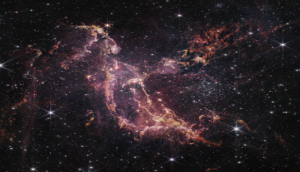
In the search for Earth-like worlds beyond the solar system, Kepler-438b seemed to have it all, but a team of scientists has suggested that vast amounts of radiation may be making life impossible there.
As per the University of Warwick research, the atmosphere of the planet, Kepler-438b, is thought to have been stripped away as a result of radiation emitted from a superflaring Red Dwarf star, Kepler-438.
Regularly occurring every few hundred days, the superflares are approximately ten times more powerful than those ever recorded on the Sun and equivalent to the same energy as 100 billion megatons of TNT.
While superflares themselves are unlikely to have a significant impact on Kepler-438b's atmosphere, a dangerous phenomenon associated with powerful flares, known as a coronal mass ejection (CME), has the potential to strip away any atmosphere and render it uninhabitable.
The planet Kepler-438b, to date the exoplanet with the highest recorded Earth Similarity Index, is both similar in size and temperature to the Earth but is in closer proximity to the Red Dwarf than the Earth is to the Sun.
Lead researcher David Armstrong explained that if the planet, Kepler-438b, has a magnetic field like the Earth, it may be shielded from some of the effects, but if it does not, or the flares are strong enough, it could have lost its atmosphere, be irradiated by extra dangerous radiation and be a much harsher place for life to exist.
The study appears in Monthly Notices of the Royal Astronomical Society.
-ANI







![BJP's Kapil Mishra recreates Shankar Mahadevan’s ‘Breathless’ song to highlight Delhi pollution [WATCH] BJP's Kapil Mishra recreates Shankar Mahadevan’s ‘Breathless’ song to highlight Delhi pollution [WATCH]](https://images.catchnews.com/upload/2022/11/03/kapil-mishra_240884_300x172.png)

![Anupam Kher shares pictures of his toned body on 67th birthday [MUST SEE] Anupam Kher shares pictures of his toned body on 67th birthday [MUST SEE]](https://images.catchnews.com/upload/2022/03/07/Anupam_kher_231145_300x172.jpg)






